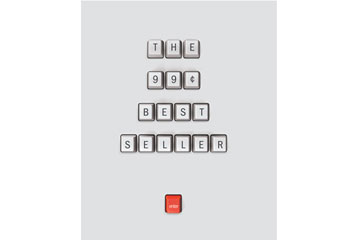
(3 of 8)
Literary lore is full of stories of failure and discovery: high school English teacher Stephen King threw out his draft of Carrie before his wife plucked it from the trash; 12 publishers infamously rejected J.K. Rowling before one said yes to Harry Potter. But whereas years of struggle used to be taken as a given for authors, it's an article of faith in the indie movement that writing fiction can be a way to get rich quick. On websites like Kindleboards.com the community exchanges encouragement and marketing tips, urging would-be writers to be masters of their own revenue streams. Sales figures and earnings, once a great unmentionable in the literary world, are openly discussed--even flaunted--as self-published writers measure their success.
So far, Hoyt told me at the spring convention, her proceeds were modest: she had sold 20 or so copies, netting about $60. That left her far short of covering her up-front costs of publication, which included $1,800 she spent to hire a freelance editor and a cover artist. But the convention marked the beginning of her serious marketing push. "I would love the slow boil," she said. "This month 100 books, next month 200 books, maybe 1,000 books eventually."
Profits aside, though, every book Hoyt had sold represented one more reader than she would have had if she had continued to accept the publishing industry's rejections. When I asked what went through her mind when she downloaded her first self-published book, Dangerous Heart, to her e-reader, she went quiet. "It was a euphoric feeling," Hoyt said, choking up a bit. "It was like, all these years."
The scenario for Dangerous Heart came to her in 2000 in a vivid dream, Hoyt says. She beheld a man and a woman, together in a box at the opera, locked in a tempestuous kiss. When she awoke, Hoyt began elaborating the scenario in her mind. Over a few days, she filled pages of a floral-patterned diary with excited notes about a story set in antebellum Philadelphia: a love triangle involving a heroine named Penelope Kinkaid, her wealthy fianc and the roguish sea captain Cord Vandenberg. She foresaw her own romantic ending. "It is my destiny," she wrote in the diary. "I will be published."
When she finished the manuscript, Hoyt duly pitched it to agents and publishing houses in New York. Her great hope was that someone would pick her book off the "slush pile," the industry's name for its vast quantity of unsolicited submissions, and offer her acceptance in the form of a publishing contract and an advance--often as little as a few thousand dollars for a first-time romance novelist. But the lucky call never came. "I would get the rejections that you don't know what to do with," Hoyt tells me. "'We loved your book, but ...'" Spurned and disheartened, she gave up on writing.
This is where Hoyt's story would have ended if not for the appearance of an unexpected rescuer--the Kindle--and with it a program that enabled writers to publish their own work. Amazon's platform, Kindle Direct Publishing, offers writers more than just the immediate gratification of seeing their stories in print. It also gives them a more favorable split of revenue than traditional publishers offer.
